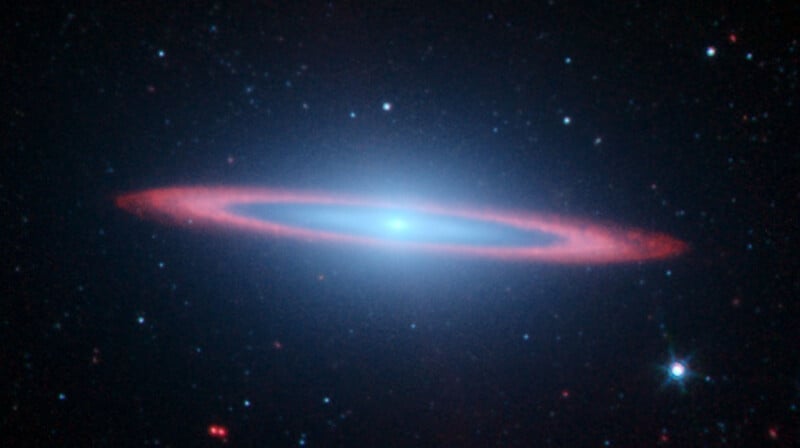Webb Scores a Hat Trick With Superb New Photo of the Sombrero Galaxy

The James Webb Space Telescope (JWST) continues showing off its remarkable imaging technology. Webb’s latest target, the Sombrero galaxy, gives the $10 billion telescope ample opportunity to showcase its mid-infrared and infrared cameras.
Also known as Messier 104 (M104), the Sombrero galaxy is a familiar target for astronomers. However, while NASA’s retired Spitzer Space Telescope and Hubble Space Telescope captured interesting details, Webb uncovered never-before-seen elements.
“In Webb’s mid-infrared view of the Sombrero galaxy, the signature, glowing core seen in visible-light images does not shine, and instead a smooth inner disk is revealed,” NASA explains.
In Hubble’s view, seen in full below, the core is just a general hazy glow. In stark contrast, Webb not only sees the core but resolves multiple inner rings.

Webb also gets a better look at M104’s outer ring, providing essential insights into how the galaxy’s dust, a vital building block of galaxies and other cosmic objects, is distributed within the galaxy. The outer ring is also bumpy in Webb’s fresh images, something neither Hubble nor Spitzer could resolve with notable detail.

Researchers believe the clumpy dust, within which Webb’s Mid-Infrared Instrument (MIRI) detects carbon-containing molecules called polycyclic aromatic hydrocarbons, may indicate a younger star-forming region. However, despite having the necessary ingredients for star formation, the Sombrero galaxy is “not a particular hotbed of star formation.” The rings of the galaxy produce less than one solar mass of stars each year, whereas the Milky Way galaxy produces about two solar masses annually. Even M104’s center supermassive black hole is a relatively docile despite its roughly nine-billion-solar mass.
It is a fascinating, unusual galaxy, which makes it an especially intriguing target for scientists. Whenever a galaxy is unusual, it is well worth taking a close peek at.
Image credits: NASA, ESA, CSA, STScI